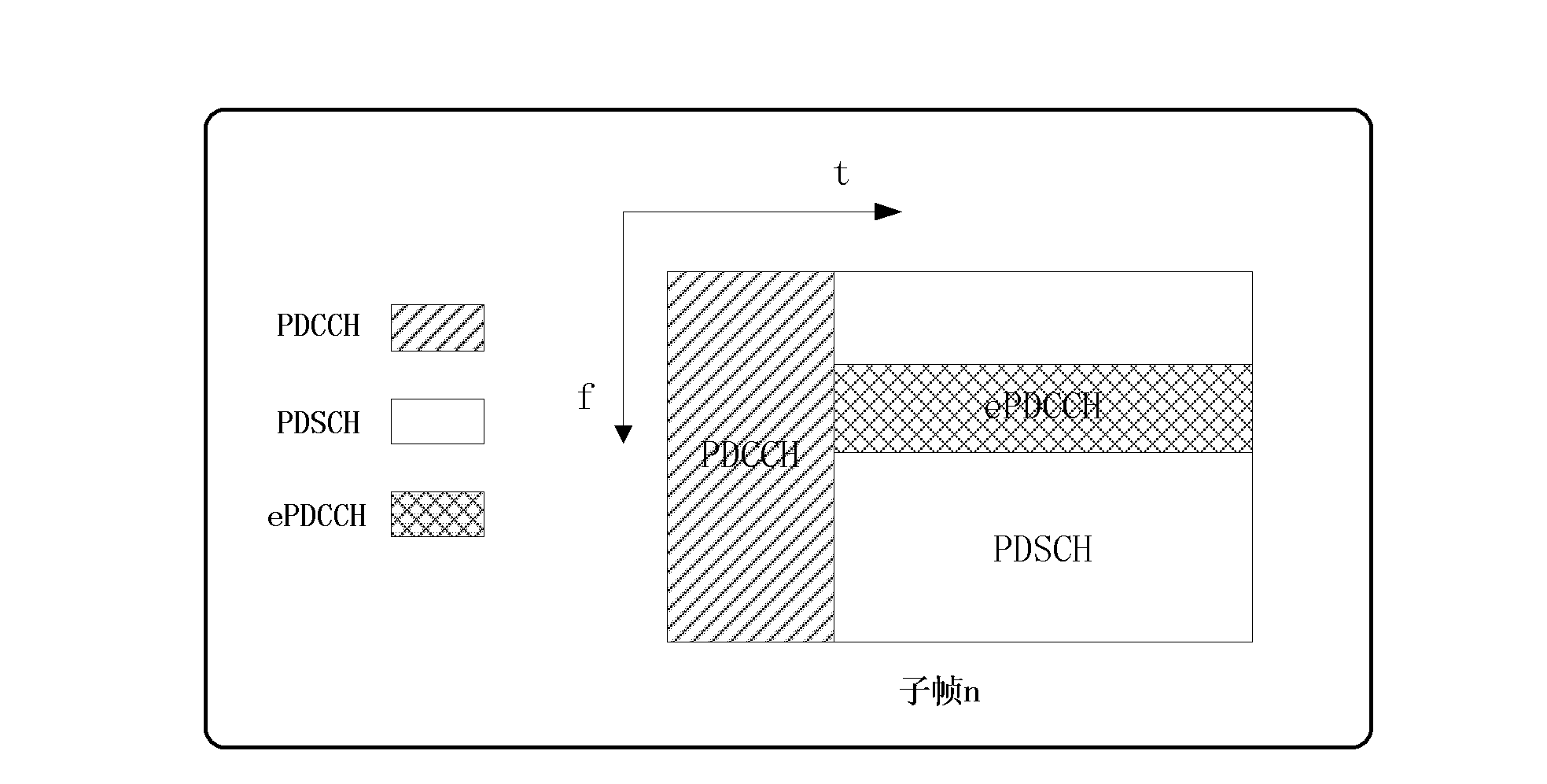Sending method and base station of downlink control information
A technology for controlling information and control channels, applied in wireless communication, space transmit diversity, electrical components, etc., can solve problems such as limited coverage performance of low-cost receiving antennas, high overhead, and lack of support for spatial multiplexing
- Summary
- Abstract
- Description
- Claims
- Application Information
AI Technical Summary
Problems solved by technology
Method used
Image
Examples
Embodiment 1
[0476] When the eNB sends system information to the UE, it only uses the PDSCH to carry the information and does not indicate it through the PDCCH.
[0477] The system information is carried in the PDSCH and sent in subframes 0 and 5. QPSK modulation is used. The TBS used is one of k types. It occupies 2 RBs of bandwidth in the full bandwidth, and the transmission mode of transmit diversity is adopted.
[0478] When receiving the public information, the UE performs blind detection in subframes 0 and 5. The UE detects whether the RNTI scrambled by the CRC attached to the message is the information sent to itself. In the search space within the entire bandwidth, the UE performs blind detection in units of 2 RB, and sequentially detects the number {1, 2} in the 6 RBs. , {3, 4}, {5, 6} RBs are detected in the third group, and then k TBSs are detected in RB numbers {5, 6}.
Embodiment 2
[0480]When the eNB sends public information to the UE, it only uses the PDSCH to carry the information and does not indicate it through the PDCCH.
[0481] The public information is carried in the PDSCH, sent in subframes 0 and 5, using QPSK modulation, using one of k types of TBS, occupying 2 RBs of the predefined bandwidth of 4 RBs, and adopting the transmission mode of transmit diversity .
[0482] When receiving the public information, the UE performs blind detection in subframes 0 and 5. The UE detects whether the RNTI scrambled by the CRC attached to the message is information sent to itself, and then performs blind detection in units of 2 RB in the search space within the predefined bandwidth.
[0483] For embodiment 1, the modulation method that can be adopted can also be other such as BPSK, 16QAM etc. besides QPSK; The occupied RB can be 1, 2, 3, 4, 5, 6 RB or more but less than 50RB; Blind detection RB There may be various combinations of time, and a combination of...
Embodiment 3
[0486] When the eNB sends public information to the UE, it uses the PDSCH to carry the information and indicates it through the DCI carried by the PDCCH.
[0487] The public information is carried in the PDSCH and sent in subframes 0 and 5, using QPSK modulation, using one of k types of TBS, occupying the bandwidth of 1 RB in the full bandwidth of 6RB, and adopting the transmission mode of transmit diversity.
[0488] When receiving the public information, the UE performs blind PDCCH detection in subframes 0 and 5. The UE detects whether the RNTI scrambled by the CRC attached to the message is the information sent to itself, and then performs blind detection and detection of DCI Format 1A according to the CCE aggregation level in the public search space within the full bandwidth, and then obtains the DCI in the PDSCH after obtaining the DCI public information.
[0489] At this time, the configuration of the transmission mode is:
[0490]
PUM
 Login to View More
Login to View More Abstract
Description
Claims
Application Information
 Login to View More
Login to View More - R&D
- Intellectual Property
- Life Sciences
- Materials
- Tech Scout
- Unparalleled Data Quality
- Higher Quality Content
- 60% Fewer Hallucinations
Browse by: Latest US Patents, China's latest patents, Technical Efficacy Thesaurus, Application Domain, Technology Topic, Popular Technical Reports.
© 2025 PatSnap. All rights reserved.Legal|Privacy policy|Modern Slavery Act Transparency Statement|Sitemap|About US| Contact US: help@patsnap.com



